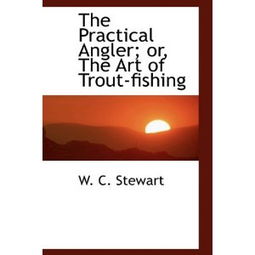Article:
Are you an aspiring angler looking to improve your fishing skills? Do you want to catch more fish with ease and efficiency? If so, you've come to the right place. In this article, we will delve into the art of hook training and provide you with a step-by-step guide to mastering the technique. Additionally, we have included a video tutorial to help you visualize and understand the process better. So, let's get started!
Importance of Hook Training
Before we dive into the details, it's essential to understand why hook training is crucial for your fishing success. The hook is the most critical tool in your fishing arsenal, as it's what catches the fish. Proper hook training ensures that you can set the hook accurately, prevent snags, and increase your chances of landing a big catch.
Choosing the Right Hook
The first step in hook training is selecting the appropriate hook for your fishing style and target species. Hooks come in various sizes, shapes, and styles, so it's essential to research and choose the right one. Consider the following factors when selecting a hook:
- Size: The size of the hook should match the size of the bait and the species you're targeting.
- Shape: Different shapes are designed for specific fishing techniques and species.
- Gauge: Thicker hooks are stronger and suitable for larger fish, while thinner hooks are ideal for delicate presentations.
Proper Hook Grip
Once you have the right hook, it's time to learn how to grip it properly. Here's a step-by-step guide:
- Hold the hook with your dominant hand, placing your index and middle fingers around the shank.
- Keep your thumb on the top of the hook, providing support and stability.
- Ensure that your grip is firm but not too tight, as this can cause unnecessary pressure on the hook.
Hook Setting Techniques

Now that you have a proper grip, let's move on to setting the hook. There are several techniques you can use, depending on your fishing style:
- The Strike-Set: When you feel a bite, quickly lift the rod tip slightly and then drop it back down. This motion helps to set the hook deeper into the fish's mouth.
- The Sweep-Set: For larger fish or heavy cover, sweep the rod tip to the side in a quick, forceful motion. This technique is effective for setting the hook in thick vegetation or heavy cover.
- The Lift-Set: When fishing with lighter tackle, gently lift the rod tip upwards to set the hook. This technique is ideal for finesse presentations and delicate baits.
Practice, Practice, Practice
As with any skill, practice is key to mastering hook training. Spend time practicing different techniques and scenarios to become more comfortable and proficient. Here are a few tips for practicing:
- Use a fishing rod with a sensitive tip to detect subtle bites.
- Work on your timing and coordination by practicing with a partner or by using a practice rig.
- Try different techniques in various conditions to see which one works best for you.
Watch the Video Tutorial
To further enhance your understanding of hook training, we have included a video tutorial. This video will walk you through the steps and provide visual demonstrations of the techniques mentioned in this article. By watching the video, you'll be able to see the proper grip, hook setting techniques, and how to apply them in different situations.
In conclusion, mastering hook training is essential for any angler looking to improve their fishing skills. By selecting the right hook, gripping it properly, and practicing different techniques, you'll be well on your way to catching more fish with ease. Don't forget to watch the video tutorial for a comprehensive guide to help you visualize and understand the process better. Happy fishing!












